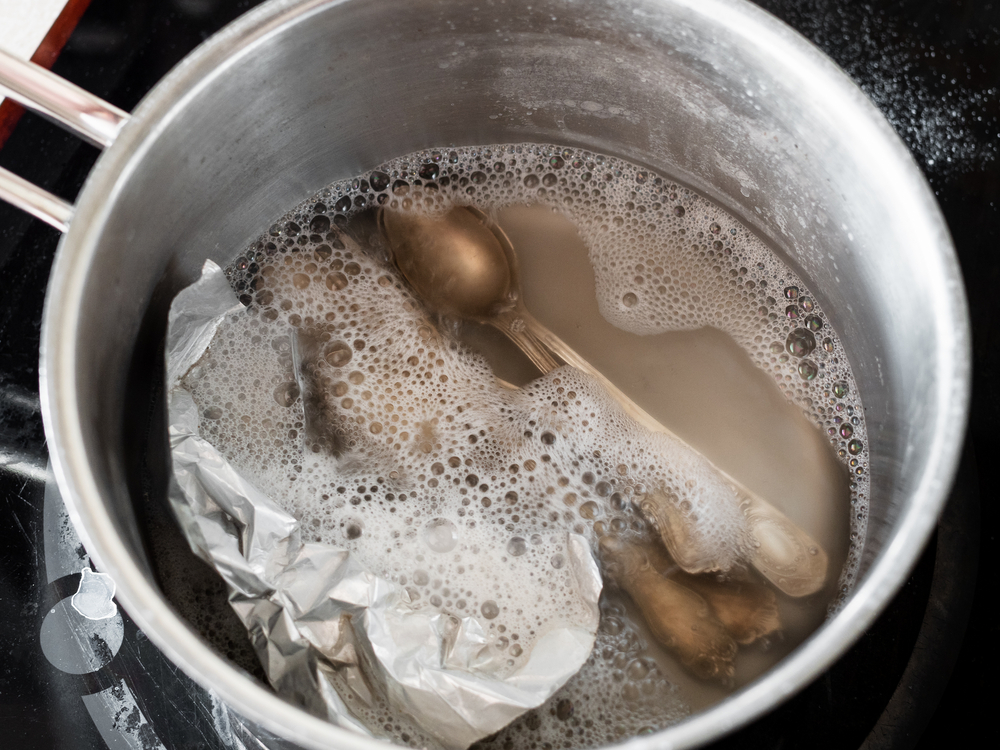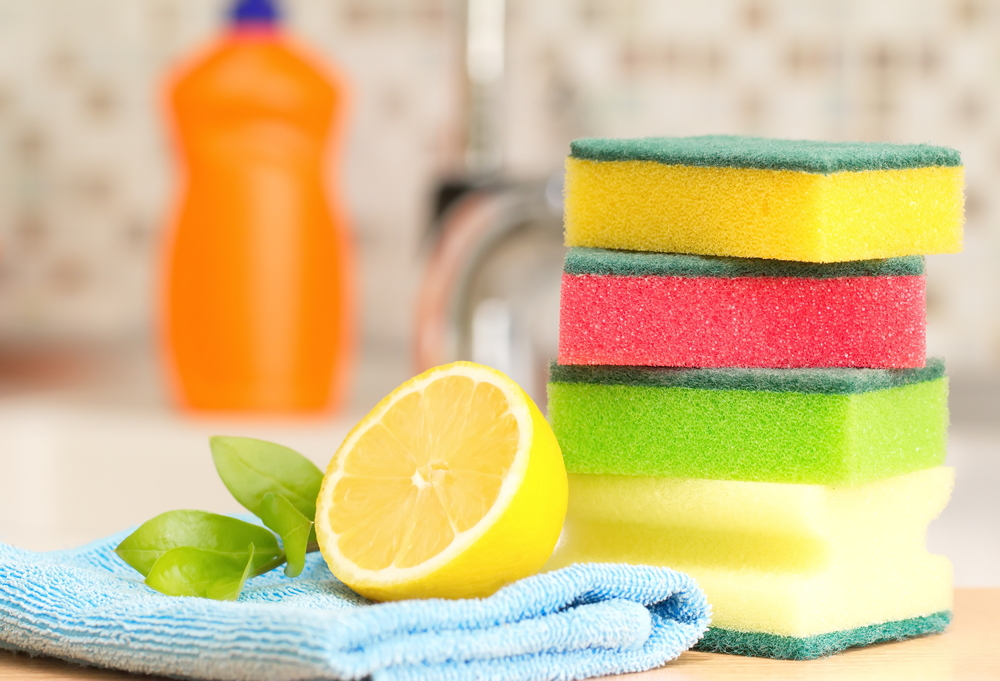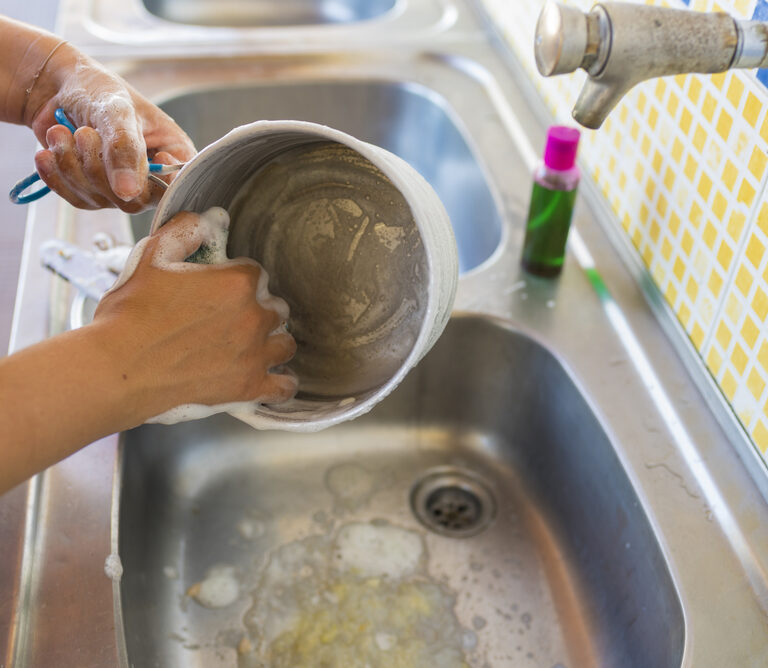As the most common metal alloy in the average American home, aluminum is an ever-present substance in our everyday lives. But as durable and attractive as the lightweight material may be, aluminum has a tiresome tendency to become dull and hazy over time.
No stress, however, because cleaning aluminum is a painless affair. With the right cleaning solution and a modest dose of elbow grease, you can restore the original glimmer of any time-worn aluminum object. From pots and pans to cooking utensils and even the kitchen sink, we’ll give you tailor-made advice on how to clean aluminum.
Why You Need to Clean Aluminum
The dull silver-colored metal is abundant on earth—it’s the most widespread metal in the world and comprises 8% of our planetary mass. Since it was first formally produced in the 19th century, aluminum has become the metal of choice for countless everyday applications. From car parts to kitchenware and appliances to interior design, you’ll find aluminum pretty much everywhere.
The secret to its success is aluminum is lighter and more affordable than steel while still sufficiently strong and durable. But even though the metal isn’t prone to rust, it does oxidize with time, which leaves behind an unsightly chalky white residue. This dull haze is a natural reaction to oxygen and entirely unavoidable—the only option is to buff it off with a non-abrasive cleaning solution.
How to Clean Common Household Aluminum Objects
While you can use commercial-grade products to restore aluminum’s silvery-white shine, a combination of common natural ingredients will work equally well—and they come in at a fraction of the cost.
Whatever you do, avoid cleaning aluminum with abrasive chemicals or coarse scrubbers as you could scratch and discolor the surface.
The optimal approach depends on what you’re trying to clean. We’ll cover the most common household goods in this three-part cleaning guide.
How to Clean Aluminum Pots and Utensils

If your kitchen utensils start to look a little dull, you can bring back their luster with this simple cleaning hack.
Gather the following:
- White vinegar or lemon juice
- Cream of tartar
- Scrubbing sponge
- Dishwashing liquid
- Clean cloth
- Weiman Pot Polish (for severe haze only)
Before you begin, you want to ensure your kitchenware is properly clean. Gently scrub each item in warm water and squirt of dishwashing soap to remove any grease and caked-on food scraps.
Now we’re ready to remove the dull oxidized haze. The great thing about this method is it requires minimal effort—the boiling water and cleaning solution do the heavy lifting for you.
- Fill your largest aluminum pot with as many of your hazy aluminum utensils as possible.
-
- Don’t use a cast iron or another type of metallic pot as the vinegar could damage the finish.
- If you can’t fit all your utensils in the pot, either use two pots or repeat the process.
- Fill the pot with hot water until two inches short of the brim.
- For every quart of water, add two tablespoons of cream of tartar and ½ cup of vinegar or lemon juice.
- Place the pot on the stovetop and put the lid on.
- Turn the stovetop on and bring the water to a boil.
- Allow the water to boil for 10 minutes.
- Remove the pot from the stovetop and pour the cleaner down the sink.
- Allow the pot and utensils to cool.
- Wash again with warm soapy water.
- Use a non-scratch scrubbing sponge to buff any remaining haze in the pot or utensils.
- Dry the pots and utensils with a clean cloth.
The interior of your big aluminum pot and all the utensils within should now appear shiny and clean.
If you want to remove mild discoloration from the exterior of a pot, try following the same process by putting it inside a bigger pot (kind of like those Russian Matryoshka Dolls). Alternatively, follow the steps we recommend below for cleaning an aluminum sink.
For heavy haze and discoloration, you may need to spring for a non-abrasive metal polish, such as Weiman Pot Polish. Although it’s primarily intended for stainless steel, it works wonderfully on aluminum as well.
How to Clean an Aluminum Kitchen Sink

You can’t pop your kitchen sink into a pot full of boiling water, so you’ll have to adopt a different approach. Luckily, it’s super easy to make your hazy aluminum sink sparkle.
Gather the following:
- Dishwashing liquid
- Scrubbing sponge
- Clean cloth
- One lemon
- Table salt
- Borax solution (optional)
- Weiman Pot Polish
Again, you’ll want to make sure your sink is nice and clean before you work on that unsightly haze.
- Clean the sink with a sponge and warm soapy water, being sure to scrub off any lingering grease or stubborn food scraps.
- Dry the surface of the sink with a clean cloth.
- Slice a lemon in half and dunk the juicy end in table salt (no, we’re not making tequila slammers here).
- Scrub the sink with the salty end of the lemon until the haze fades away.
-
- As lemons aren’t abrasive, feel free to add some elbow grease.
- Rinse out the sink and soak up any lemon juice with a sponge.
- Dry the sink with a clean cloth.
Remember: You can also use this method to clean the exterior of large pots and pans. It’s easier to do that straight away while you’ve still got your salty lemon at hand.
Don’t have any fresh lemons in the fridge? Try this option instead.
- Clean and dry your sink.
- Sprinkle borax solution on the surface.
- Rub a moist cloth over the sink until the haze fades away.
- Rinse and dry the sink.
If you’ve given your sink a solid lemony scrub and it still appears hazy, consider upgrading to a commercial cleaner. Weiman Pot Polish is your best bet, once again.
How to Clean Aluminum Furniture
If you’re looking to spruce up your faded aluminum furniture, you first need to think about the finish—a vinyl-coated aluminum chair requires an entirely different approach to a powder-coated one, for example. Work out what your furniture is coated in and research the top cleaning techniques on our website.
We’ll teach you how to clean bare, uncoated aluminum furniture below.
Gather the following:
- Garden hose
- Dishwashing liquid
- Clean cloth
- Scrubbing sponge
- White vinegar (or lemon juice and cream of tartar)
Now you’re ready to begin.
- Rinse off your furniture with a hose.
- Scrub off any gunk and residue with a sponge.
- Clean the furniture with a dry cloth.
- Mix two cups of water and two cups of white vinegar into a bowl.
-
- Lemon juice or cream of tartar will do if you don’t have any vinegar handy.
- Feel free to create more solution if you’re working with lots of furniture.
- You can add a squirt of dishwashing soap for extra oomph.
- Use a clean cloth or soft scrubbing pad to rub the solution into the furniture.
- Continue buffing the surface until the aluminum begins to brighten up.
- Rinse the furniture clean with a hose.
- Dry the furniture with a clean cloth.
This method works well on other aluminum surfaces like the exterior of large pots and pans. If the acidic solution didn’t achieve the desired results, try using the salty lemon technique we taught you for cleaning aluminum sinks.
It doesn’t hurt to add a fresh coat of car wax to the newly cleaned aluminum—follow the manufacturer’s instructions.
How to Clean Aluminum: Final Thoughts
Even though it’s ultra-durable and will never rust, aluminum does have a habit of discoloring as it oxidizes over time. But with some basic household products and a little technical know-how, you can restore the original luster of any hazy aluminum object.
The easiest cleaning technique depends on the object in question. Follow the step-by-step processes outlined in our guide to revitalize your worn-out aluminum and restore its like-new shine.
